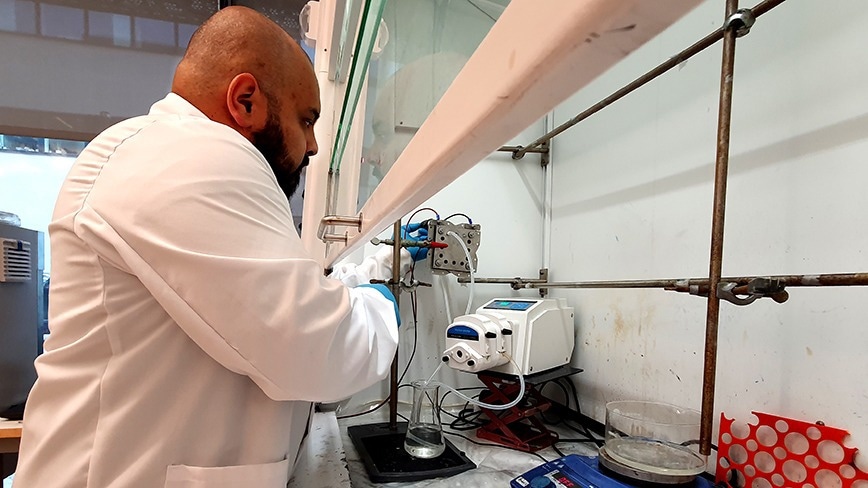Researchers have revealed an innovative method for more effectively generating hydrogen energy, which involves separating water into hydrogen and oxygen without running the risk of combining the two gases.
 A new way to produce hydrogen gas, simply and safely, was published today in Science Advances. Co-author Esteban Toledo, PhD student at KTH Royal Institute of Technology, works with the decoupled water splitting prototype. Image Credit: David Callahan
A new way to produce hydrogen gas, simply and safely, was published today in Science Advances. Co-author Esteban Toledo, PhD student at KTH Royal Institute of Technology, works with the decoupled water splitting prototype. Image Credit: David Callahan
The new technique, created at the KTH Royal Institute of Technology in Stockholm, disentangles the conventional electrolysis approach, which uses an electric current to divide water molecules to produce hydrogen gas.
It generates the ensuing hydrogen and oxygen gases separately, as opposed to concurrently in the same cell as in current systems, where they have to be kept apart by membrane barriers.
According to researcher Esteban Toledo, a Ph.D. student at KTH who co-authored the study published in Science Advances with Joydeep Dutta, a professor of applied physics at KTH, such separation removes the chance of the gases combining with the risk of explosions. It also removes the need for rare earth metals.
The method was patented by the two researchers, and a company, Caplyzer AB, was established to develop the innovation with support from KTH Innovation.
According to Dutta, the study demonstrated a 99 percent Faradaic efficiency for hydrogen gas. The researchers also note that long-term lab experiments revealed no apparent electrode deterioration, which is significant for commercial applications.
Oxygen is always produced when hydrogen is produced from water. An ion-permeable barrier divides an alkaline water chamber containing a paired pair of positive and negative electrodes in a standard alkaline electrolyzer. Water combines with an electric current at the cathode to make negatively charged hydroxide ions and hydrogen, which diffuse past the barrier to the anode to produce oxygen.
However, the barrier creates resistance, and an explosive mixture of hydrogen and oxygen is more likely if the electric charge varies.
Toledo believes that rethinking water electrolysis paves the way for a more reliable kind of green energy production that incorporates intermittent sources like solar or wind.
Since we don’t risk mixing the gases, we can operate over a wider range of input power. It is much easier then to couple with renewable energies that generally provides variable power.
Esteban Toleda, Study Co-Author and PhD Student, KTH Royal Institute of Technology
One of the electrodes is replaced with a supercapacitive electrode composed of carbon, which prevents simultaneous gas generation. These electrodes rotate between storing and releasing ions, effectively separating hydrogen and oxygen generation.
When the electrode is negatively charged and produces hydrogen, the supercapacitor stores energy-rich hydroxide (OH) ions. When the current is reversed, the supercapacitor releases the absorbed OH and produces oxygen at the now-positive electrode.
One electrode does the evolution of both oxygen and hydrogen. It is a lot like a rechargeable battery producing hydrogen – alternately charging and discharging. It’s all about completing the circuit.
Joydeep Dutta, Professor, Applied Physics, KTH Royal Institute of Technology
The research was partially supported by Vinnova and Åforsk.